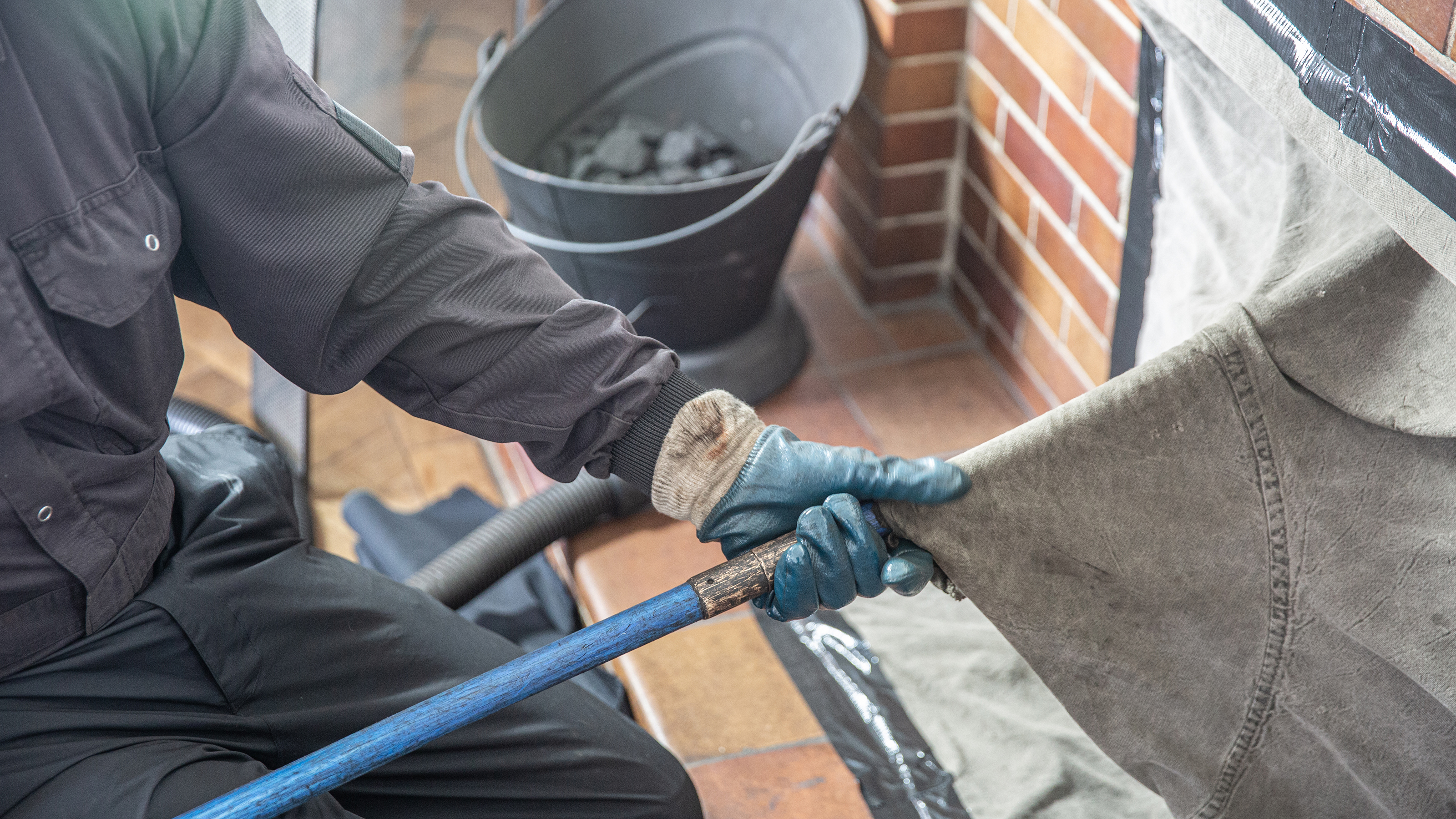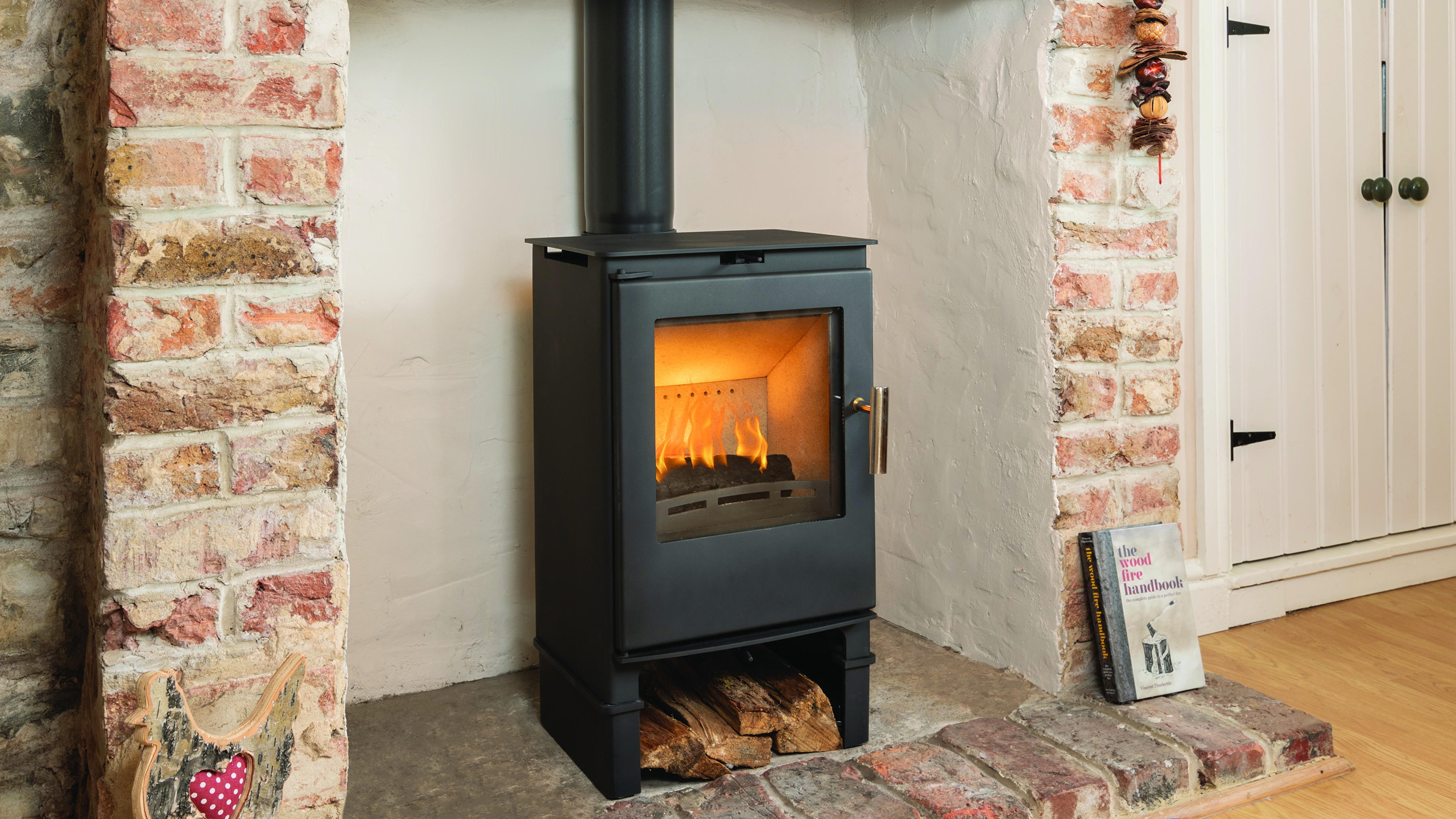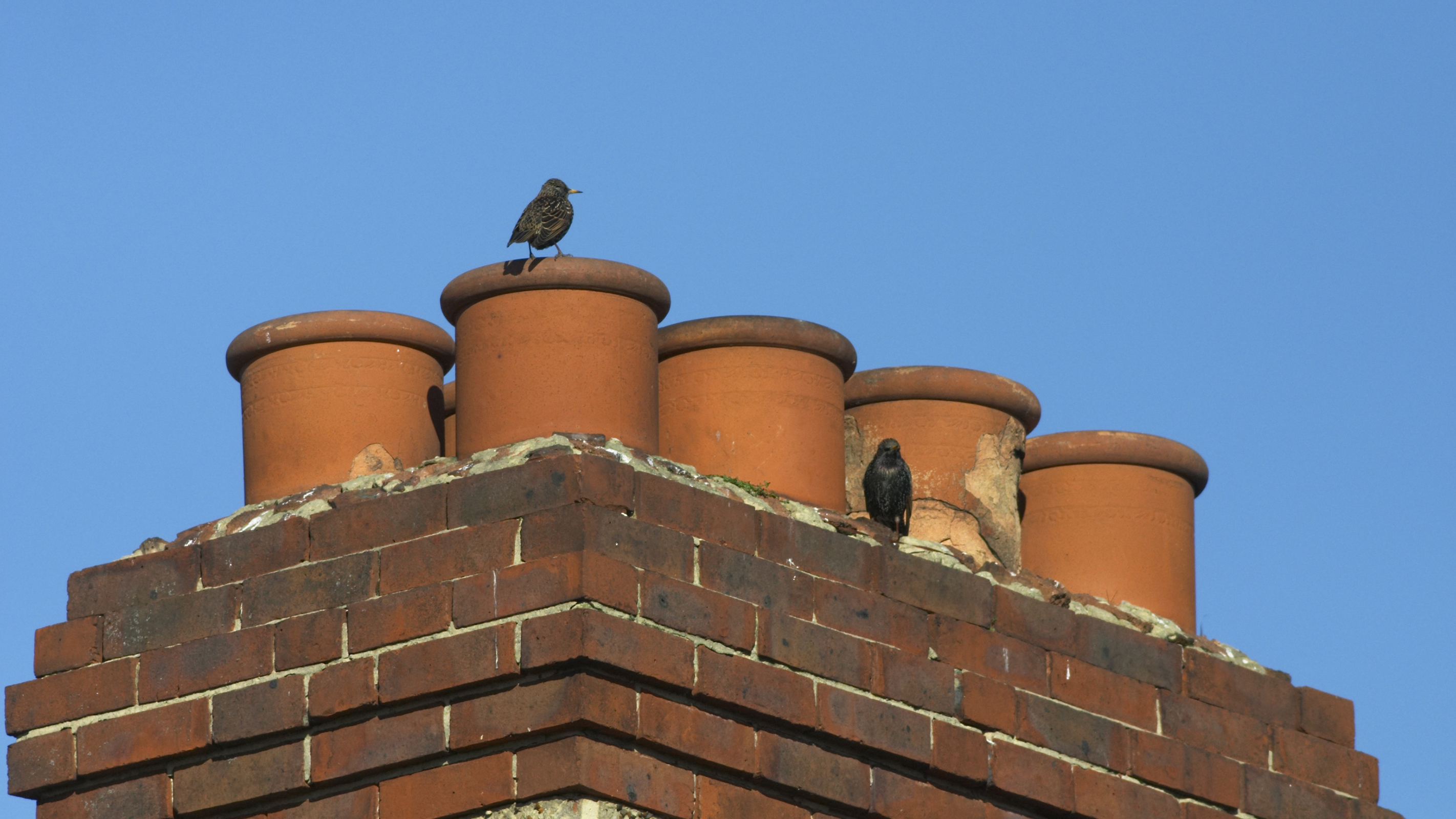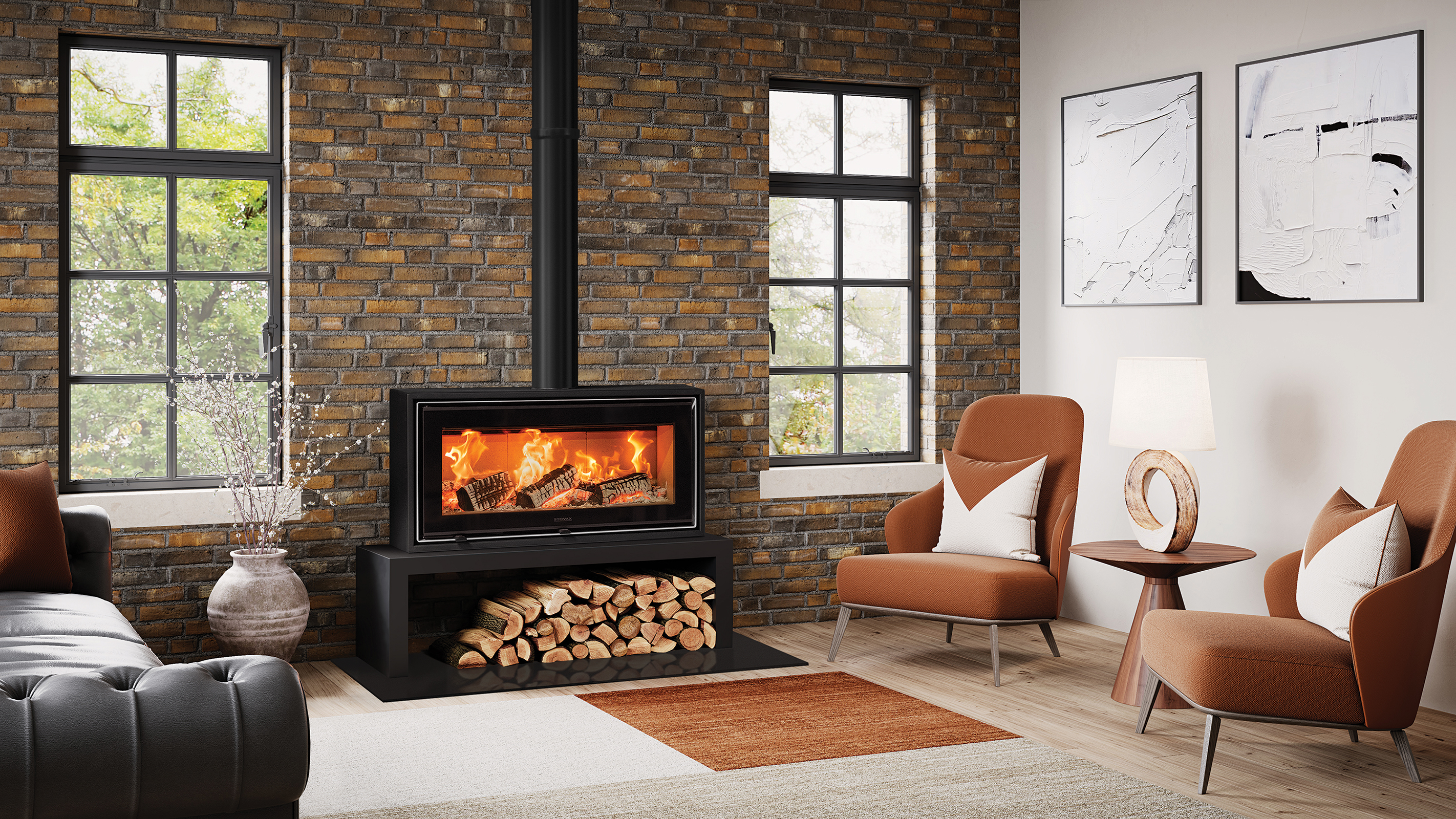How often should you sweep your chimney? Experts give their verdict
Exactly how often should you sweep your chimney? We put the question to three experts in the field to ensure that you can enjoy a roaring fire safely this winter

How often should you sweep your chimney? This is a common question to ask now that summer is a mere memory and temperatures have taken something of a downward turn.
Owners of open fires and log burning stoves can now get ready to reap the benefits of their cosy heat sources and hopefully put off turning on the central heating for just a little longer. However, for all their benefits, open fires and stoves do need a degree of maintenance if they are to perform at their best.
Having your chimney swept is a vital part of fireplace maintenance and now is just the time to have it done. We have grilled the experts on how often to have this job carried out and asked what times of year are best. In addition, we have some invaluable tips when it comes to how to look after and maintain your fireplace so that it remains a beautiful, warming focal point all year round.
How often should you sweep your chimney according to the experts?
Just how often should you sweep your chimney? Although there are several factors that can affect the frequency of which this essential home maintenance task should be carried out, there are certain guidelines to pay attention to if you want your fire or stove to perform efficiently and safely.
Both stoves and open fires need their chimneys swept regularly to ensure there are no blockages or debris — the presence of these will not only have a detrimental effect on how well they perform, but could also put you at risk of a chimney fire.
All chimneys – including brick, clay, lined and twin-walled – need to be swept regularly, but just how often is recommended?
“Depending on how often you use your wood burning stove or fireplace, it is recommended to sweep your chimney either once or twice a year, either at the end of the season, or before the next autumn," says Chris Baines, MD at Eurostove Ltd. "With stoves becoming more popular, we recommend you treat the sweeping like a car service, and simply book the next appointment when you have it swept, as chimney sweeps get very booked up.”
"Along with obstructions, soot, deposits and tar can build up in your chimney over time, reducing the draw, making the stove run less efficiently and putting your property at risk of a chimney fire," says Mike Coke, Biomass Products Development Manager at Stovax & Gazco.
"If you are burning wood, ensure your chimney is swept at least twice a year; this can be reduced to once if you are using a multi-fuel stove to burn fuels other than wood. It is also important to have your stove serviced by a qualified installer to ensure you see the best performance from your appliance."
But how about open fires? Do their requirements differ from stoves?
"We usually advise customers that if burning wood, once a year is fine, but with coal, twice a year, as a rule of thumb," says Peter Wright from Federation of British Chimney Sweeps (FBCS).
How often you should have your chimney swept will also depend on how you use it, how often you use it and the type of fuel you are burning — as well as the type of house you live in.
"If, for instance, someone uses their fire 24/7 for several weeks, they may need to have it swept more often," says Peter Wright. "Thatched properties may also be required to have their flues swept quarterly — this will be governed by your insurance company do check.
"Basically, a flue works more efficiently if swept regularly — it's an exhaust system and we all know how polluting an exhaust can be if you do not maintain it."

How do you know when your chimney needs sweeping?
Once you have turned your fireplace ideas into a reality, having your chimney swept regularly should mean that you never run into problems. However, if you are still wondering whether it is time to call in the professional sweeps, there are some tell-tale signs your chimney needs cleaning, including:
- Smoke escaping back into the room
- Soot and debris falling into the stove or fire
- Visible nests at the top of your chimney — or rustling sounds coming from within
- Tar around the flue entrance
- Fire not burning as well as usual
- Strong smell of soot — even when the fire is unlit

Do gas fire chimneys need to be cleaned?
Think a gas stove won't need its chimney sweeping? Even alternatives to fireplaces need looking after.
While a gas stove will not have the same maintenance requirements as a log burning stove or open fire, the chimney will still need sweeping. Ensure your gas stove has a thorough maintenance check once a year — gas flues are basically exhaust pipes to remove carbon monoxide and if they become blocked this could be extremely dangerous.
Do chimney cleaning logs work?
You may have seen or heard of chimney sweeping logs, also sometimes called chimney cleaning logs, but what exactly are they and could they actually mean you have to have your chimney swept less often?
Chimney sweeping logs have additives in them which, when burnt, rise into the chimney to dislodge existing creosote deposits and prevent new ones from forming. The idea is that when burnt regularly, these logs trigger a chemical reaction in your chimney, causing creosote build up to flake away and disperse.
Although they can be useful in keeping chimneys cleaner for longer and for making the cleaning process a little less hard-going, they should not be viewed as a substitute for having your chimney swept — something even the manufacturers agree on.
"Chimney cleaning logs are not to be used as an alternative to a sweep," says Peter Wright. "They may, in some circumstances loosen the tart, but they won't remove it, so I usually advise only to use them when a sweep directs you to in order for them to sweep afterwards — the logic is the tart will be loosened and easier to remove."
When should I have my chimney swept?
Of course if you are renovating and are in the process of opening up a fireplace, chimney sweeping will be something that is top of your list. However, along with guidance on how often you should have your chimney swept, the experts also have an opinion on the best times of year to clean a chimney.
"If you do not have a chimney guard it is really important to sweep the chimney before your first fire of the autumn as birds love nesting in them where it is nice and cosy," says Chris Baines.
HETAS state that the best times to have your chimney swept are just before the start of the heating season and after your stove has not been used over a prolonged period.

Can I clean my chimney myself?
Many people keeping an eye on the bank balance may find themselves asking, 'what does a chimney sweep cost?'
Although those trying to make savings can give DIY chimney sweeping a go, there are a few considerations to bear in mind.
Firstly, you will need to invest in all the equipment needed to sweep the chimney — which could well end up costing you the same amount or more as calling in the pros. You will also need to find somewhere to store it.
Secondly, and perhaps most importantly, some household insurance policies require a certificate showing your chimney has been swept by a sweep who is a HETAS Approved Chimney Sweep or a member of a chimney sweeping association such as The Association of Professional Independent Chimney Sweeps (APICS), The Guild of Master Chimney Sweeps (GoMCS), The National Association of Chimney Sweeps (NACS) or Sweep Safe.
And lastly, a good professional sweep won't just clean your chimney. They will also be able to spot other potential problems that you might not notice, such as cracks or essential repairs that need carrying out to ensure your fire or stove performs at its best.
"A solid fuel stove requires an annual service, which includes stripping and cleaning the appliance thoroughly, and removing all excess ash. It will also need to be checked for any broken or damaged parts that need replacing, and the door glass will need cleaning," says Mike Coke.
Top fireplace maintenance jobs
In order to keep your stove or fireplace in good working order and looking its best, there are several things you can do. Carry out the following tasks and checks on a regular basis — particularly when lighting the fire regularly.
- Burn the right type of fuel: Dry seasoned wood or smokeless fuel are the cleanest options. Dry logs (preferably ones that have been seasoned for a year or more) help to avoid tar deposits collecting in the flue and burn more efficiently.
- Clear out ash and debris: Not only will disposing of ash build up regularly mean your fire burns more efficiently but it also improves the look of the fireplace.
- Keep your stove clean: Find out how to clean log burner glass quickly to ensure you can enjoy those flickering flames.
- Have your chimney swept regularly.
- Regularly check seals, openings and your fireplace walls for cracks or damage.
Get the Homebuilding & Renovating Newsletter
Bring your dream home to life with expert advice, how to guides and design inspiration. Sign up for our newsletter and get two free tickets to a Homebuilding & Renovating Show near you.
Natasha was Homebuilding & Renovating’s Associate Content Editor and was a member of the Homebuilding team for over two decades. In her role on Homebuilding & Renovating she imparted her knowledge on a wide range of renovation topics, from window condensation to renovating bathrooms, to removing walls and adding an extension. She continues to write for Homebuilding on these topics, and more. An experienced journalist and renovation expert, she also writes for a number of other homes titles, including Homes & Gardens and Ideal Homes. Over the years Natasha has renovated and carried out a side extension to a Victorian terrace. She is currently living in the rural Edwardian cottage she renovated and extended on a largely DIY basis, living on site for the duration of the project.

